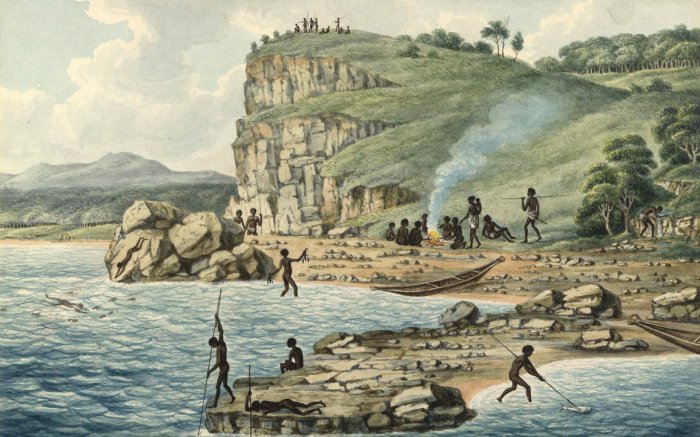
Reconciliation with our Indigenous fellow citizens is incredibly important to most of us, as we recall the suffering of many Indigenous families over the past two centuries or more.
Here at FamilyVoice Australia we have a deep concern to reach out to the Indigenous community, and regularly give encouragement to Aboriginal children and adults.
But as Sydney Presbyterian pastor Mark Powell said in a recent Quadrant article, “Reconciliation starts with telling the truth.”
Mark has a degree in anthropology. He has studied several primary sources detailing Indigenous culture from the late 18th century, such as those summarised by noted anthropologist A.P. Elkin.
Mark says it’s difficult to see how true reconciliation can occur when falsehoods – such as claims that Aboriginal people lived in peace and harmony until the Europeans came – continue to be perpetrated.
So what were the actual beliefs and practices of Indigenous peoples living in Australia, especially since Europeans arrived?
In his classic account published in 1964, The Australian Aborigines: How To Understand Them, Elkin describes how Indigenous communities treated their women. They were considered chattels, or worse. Some examples:
- Before a revenge expedition sets out on its dangerous enterprise, its members temporarily exchange wives, thus expressing their unity and friendship to one another.
- The final making of peace between two groups may always include the temporary exchange of wives, and on such occasions, all the usual tribal marriage laws (except those concerned with incest within the family) may be and are usually broken.
- Very often at times of great excitement during ceremonies, the men go aside to prearranged places and there have sexual intercourse with the women, and once again, the usual rules governing the intercourse of the sexes are ignored.
- These occasions are communal in nature, but there is another – the lending of a wife to a visitor.
Robert Hughes AO wrote the early history of British penal settlement in Australia, The Fatal Shore. He sought to provide an unvarnished snapshot of the cultural standards of that time, such as:
…the unalterable fact of [Indigenous] tribal life was that women had no rights at all and could choose nothing. A girl was usually given away as soon as she was born. She was the absolute property of her kin until marriage, whereupon she became the equally helpless possession of her husband. Before and after [marriage], she was merely a root-grubbing, shell-gathering chattel, whose social assets were wiry arms, prehensile toes and a vagina…
As a mark of hospitality, wives were lent to visitors whom the Iora tribesmen wanted to honour…. If a woman showed the least reluctance to be used for any of these purposes, if she seemed lazy or gave her lord and master any other cause for dissatisfaction, she would be furiously beaten or even speared.
There are many other accounts, such as one by escaped convict William Buckley. He lived for over 30 years among different Aboriginal groups, mostly in Victoria. In his story published in 1852, he reported that “violence, treachery, and killings” were common, almost everyday occurrences.
In many cases the conflicts began over sexual jealousy and abduction of women who, according to Buckley, were the “source of almost all the mischief in which the men engaged”.
Female Aboriginal skulls and bone fragments, uncovered and recorded by archaeologists and dated thousands of years old, had many more massive bone lacerations and scars compared with those in male skulls in the same burial site.
None of this evidence justifies the appalling treatment of Indigenous people by some white settlers.
But Australia’s Indigenous culture was far from idyllic before 1788. As Mark Powell says, true reconciliation cannot be achieved while historical falsehoods continue.
Peter Downie - National Director
FamilyVoice Australia

